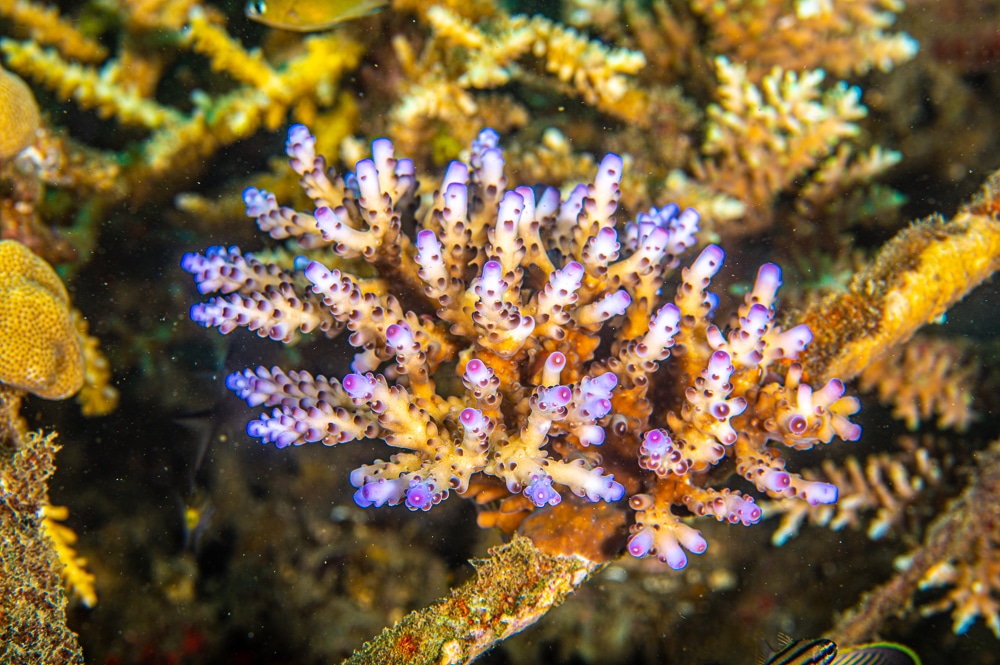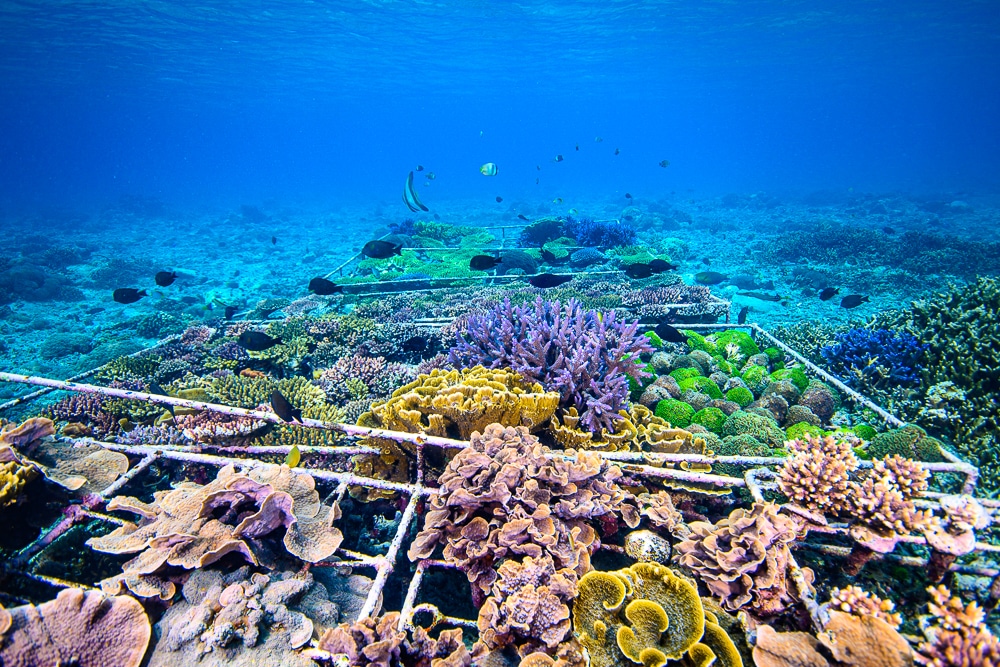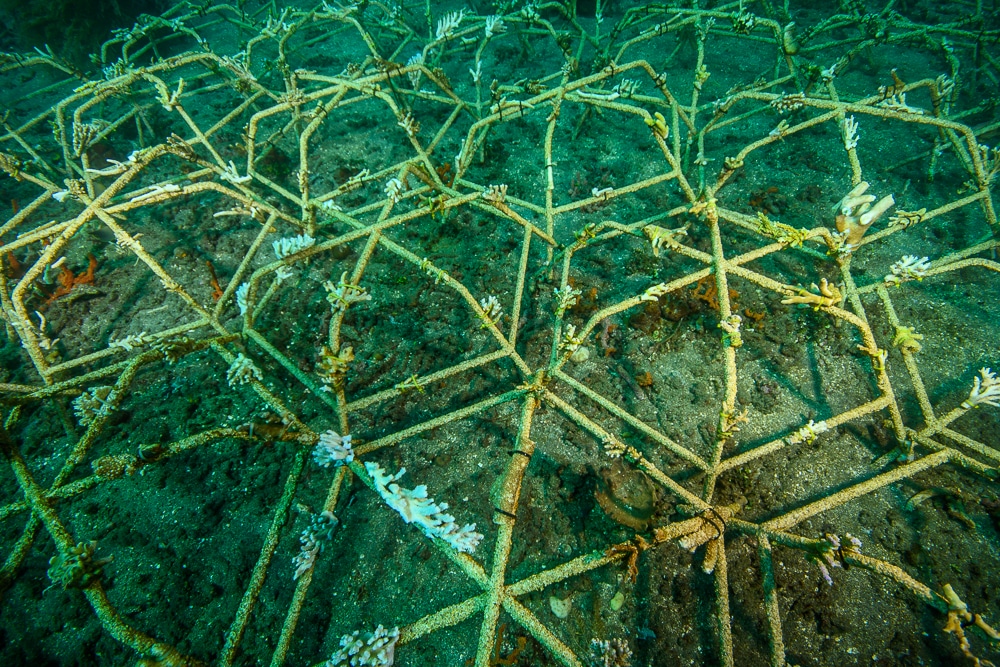It seems like the reef star method, using small steel structures covered with resin and attaching corals fragments using cable ties on them is getting really popular. But we see quite a few projects achieving poor results because of often the same problems. Here is some input on classic mistakes done when using these small structures.
Lack of Fragments of opportunity:

Some reefs with pretty good Acropora coral cover might have quite a large selection of loose, broken pieces of coral that can be used for seeding the reef stars. But with reefs declining all around the world, and especially their Acropora cover, being the first to go. Most of the time, looking for corals of opportunity might be challenging. This results in mixing species, which increases competition and leads to the death of many corals, using the wrong species in the wrong place…

Plus what is a coral of opportunity? Are these loose pieces of corals really have no chance? Actually, asexual reproduction is the main strategy of many coral species, especially from the genus Acropora. So most coral of opportunity actually has a chance to survive.

So the result is degrading a reef to restore another one. We don’t think, this is the right strategy. And that’s why we favor the use of selected fragments produced in nurseries.

Species mixed on structures:
Even if corals might look inoffensive. They are very competitive, and often lethal toward one another. mixing different species of corals on the same structure, always end up, with one dominating all the other and killing them, overgrowing them one by one. Which at the end of the day, is just a waste of energy and time. It just slows down the whole process.


While, if each reef star or small group of reef stars is seeded with the same species. A bit in the way Micro-fragmentation works, all fragments will fuse into a large, mature coral colony that will quickly produce eggs to reproduce and seed other reefs.
Corals planted outside water, under sun and wind:
In a time where corals are constantly under stress due to rising sea surface temperatures. Taking corals out of the water, and exposing them to direct sunlight and wind, is actually very stressful, and end up in coral dying within a week after being planted. While it wasn’t a real problem when corals were healthy and unstressed.

Always avoid taking corals out of the water, and if possible plant them directly underwater. Or expose them to air for the shortest time possible.
Not all corals grow well on metal frames:

Not all species of coral develop a solid base and attach themselves firmly to artificial reefs. Some corals just concentrate their growth vertically and almost never create a base and thus never stick to the structures. And if they do, they will become weak, and the first storm will break them apart. Plus one of the disadvantages of these artificial structures is that only branching corals can be attached to them, leaving away all foliate, plating, encrusting, and massive otherwise really important species of corals.
Not the most ecological method:
Steel has an enormous carbon footprint. Coated with resin, and corals fixed using plastic cable ties, has a terrible plastic footprint. Even if most of the cable ties are going to end up being grown over by the corals, our plastic footprint should be reduced.

If the steel structure without coating are immersed for 2-4 weeks, before being seeded, they get covered by a natural layer of CCA (Crustose Calcareous Algae) which is a natural coating.

Corals can be attached using wire, natural fiber rope, or any other material with a lower environmental impact.
Reef stars are a very good tool for coral reef restoration, but they should be used in conjunction with other techniques to give a good natural result.